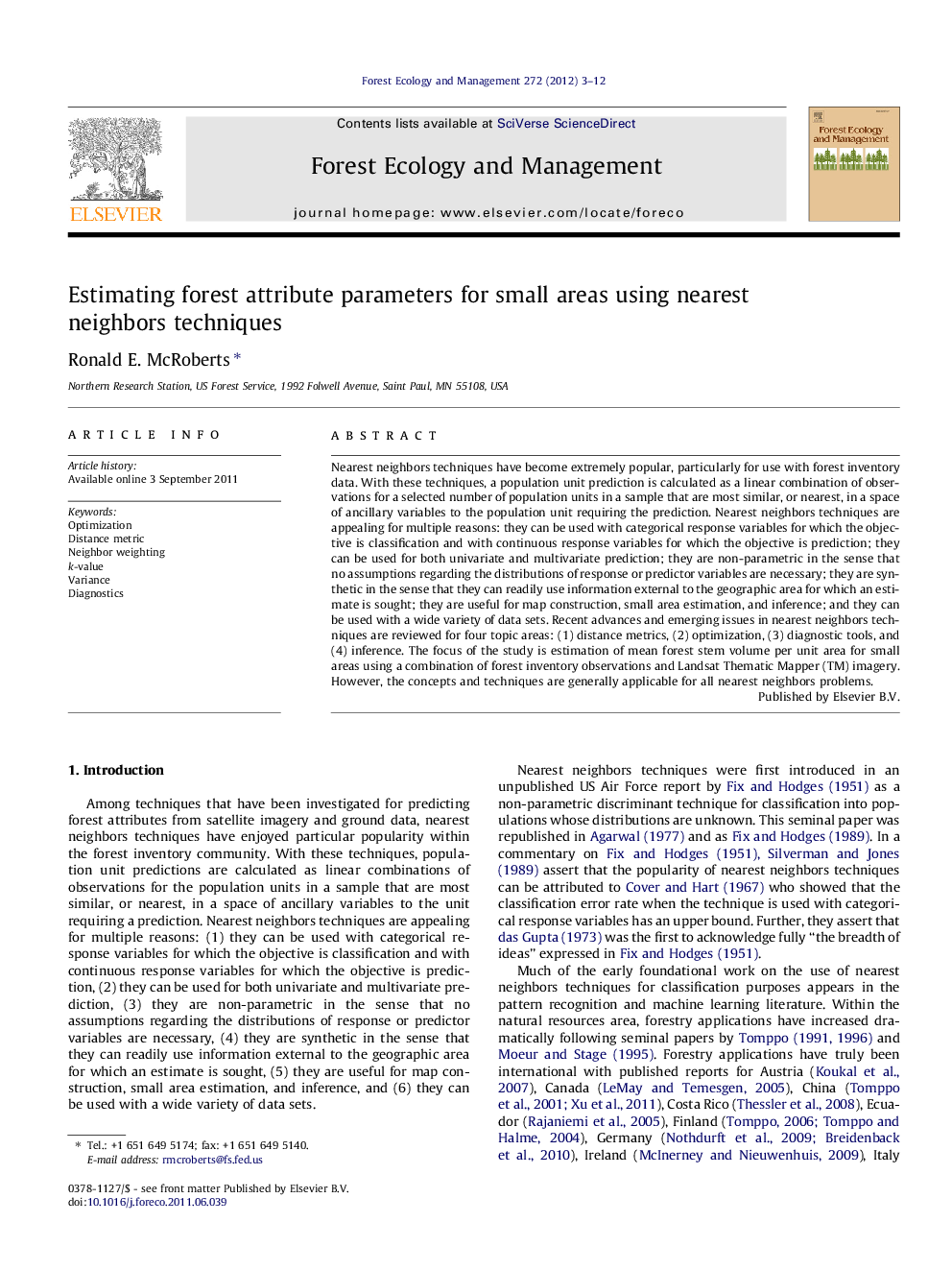| کد مقاله | کد نشریه | سال انتشار | مقاله انگلیسی | نسخه تمام متن |
|---|---|---|---|---|
| 87251 | 159241 | 2012 | 10 صفحه PDF | دانلود رایگان |

Nearest neighbors techniques have become extremely popular, particularly for use with forest inventory data. With these techniques, a population unit prediction is calculated as a linear combination of observations for a selected number of population units in a sample that are most similar, or nearest, in a space of ancillary variables to the population unit requiring the prediction. Nearest neighbors techniques are appealing for multiple reasons: they can be used with categorical response variables for which the objective is classification and with continuous response variables for which the objective is prediction; they can be used for both univariate and multivariate prediction; they are non-parametric in the sense that no assumptions regarding the distributions of response or predictor variables are necessary; they are synthetic in the sense that they can readily use information external to the geographic area for which an estimate is sought; they are useful for map construction, small area estimation, and inference; and they can be used with a wide variety of data sets. Recent advances and emerging issues in nearest neighbors techniques are reviewed for four topic areas: (1) distance metrics, (2) optimization, (3) diagnostic tools, and (4) inference. The focus of the study is estimation of mean forest stem volume per unit area for small areas using a combination of forest inventory observations and Landsat Thematic Mapper (TM) imagery. However, the concepts and techniques are generally applicable for all nearest neighbors problems.
► Nearest neighbors techniques produce valid small area estimates and inferences.
► The Euclidean distance metric performs as well as optimized metrics.
► The bootstrap variance estimator is a valid alternative to a complex parametric estimator.
► Equal neighbor weighting produced predictions comparable to more complex schemes.
Journal: Forest Ecology and Management - Volume 272, 15 May 2012, Pages 3–12